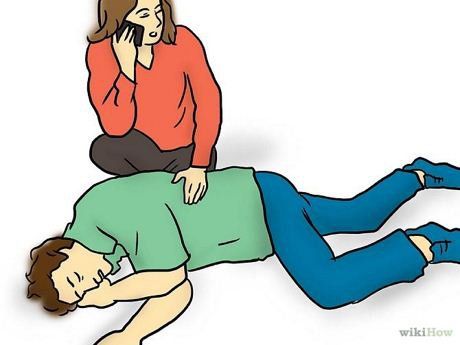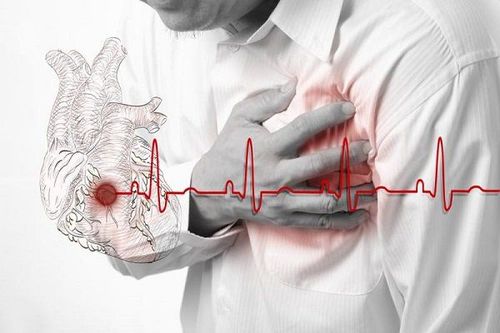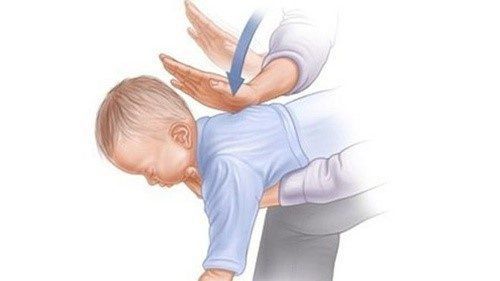This is an automatically translated article.
We all hope we'll never be in a position to save a child's life, but the reality is that at any moment we can meet a child in danger. Children are always curious, learn about the world around them, try to test their physical limits, so they are prone to some dangerous situations such as choking on food, falling from cars or toys, wading into water. without adult supervision,....What would you do when you encounter a choking baby? Do you know CPR for babies? These are the knowledge you need to equip yourself, especially if there are children in your family, this is very important. Because these knowledge can help you save the unfortunate baby falling into a dangerous situation.
1. How to give first aid to a choking child
1.1. Step 1: Assess your baby's condition quickly If you see a child suddenly unable to cry, cough or become unable to speak, there may be something blocking the child's airway and you need to help him or her to recover. it out.The child may make strange noises or make no sound at all when he opens his mouth. Your baby's skin may turn bright red or blue.
If the child coughs or vomits, it means that the child's airway is only partially blocked. If that's the case, let your child continue to cough, as coughing is the most effective way to clear congestion.
You need to call an ambulance if your child has the following symptoms:
The child cannot cough up a foreign object. You can ask someone to call 911 when you give your baby CPR. If you are alone, give CPR for 2 minutes, then call 911. If you suspect your child's airway is blocked due to swelling in his or her throat. Your child may be allergic to food or insect bites, or he may have a serious medical condition like lung cancer. Children are at high risk of heart disease. You witness the child suddenly choking. 1.2. Step 2: Try to dislodge the foreign body by patting the back and pressing the abdomen When detecting that the child is suffocating due to the foreign object, first, you need to perform the back patting.
If your child is awake but can't cough, speak, breathe or start turning pale, stand or kneel behind him, place one arm diagonally in front of your chest and lean forward. Gently pat the area between the child's shoulder blades with the base of your other hand. Subsequent blows must be stronger and more definitive to dislodge the foreign body from the infant's airway. You need to do 5 such back pats for the child. After performing the back patting movement, you need to perform the baby belly squeeze.
You stand with one foot in front, one foot behind, or kneel behind the child and wrap your arms around the baby's waist. Locate your baby's navel with one or two fingers. Make a fist with your other hand and place your thumb against the center of the baby's belly, just above the navel and below the lower end of the breastbone. Make a fist with one hand, grab the outside of the fist with the other hand, and perform five abdominal thrusts. Each back abdominal thrust must be stronger than the previous one to dislodge the foreign body. You need to do repetitions of back patting and abdominal presses. Continue alternating five back pats and five abdominal thrusts until the object is ejected or the child begins to cough heavily, speak, cry, or breathe. If the child is coughing, encourage the child to cough to clear the object.
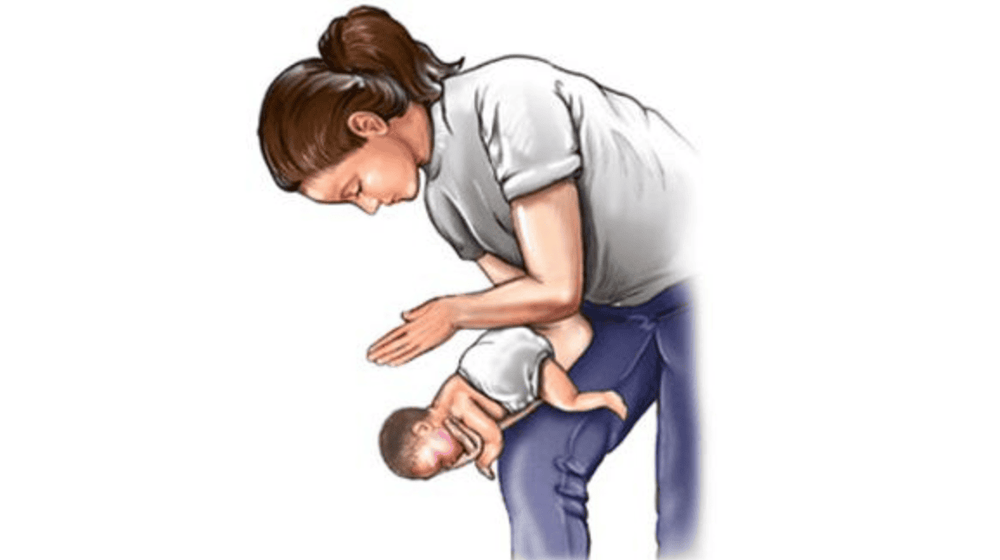
Khi phát hiện trẻ bị ngạt thở do dị vật, đầu tiên, bạn cần thực hiện vỗ lưng trẻ
Place the child on his or her back on a firm, flat surface. Kneel next to the child's chest, placing one hand on the breastbone, in the center of the child's chest. Then place your other hand on top of the other. You need to try to keep your fingers from touching the baby's chest by holding them up, or interlaced. Perform 30 chest compressions by pushing the child's breastbone down about 2 inches (about 5cm). Let the baby's ribcage return to its normal position before starting the next compression. Then open the child's mouth and look for the blockage. Never put your finger in a child's mouth unless you can actually see the obstruction. Because if you can't see the object and you still put your finger in the baby's mouth, you could accidentally push the object deeper into the baby's throat. If you see a foreign object, skillfully remove it. If you cannot remove the foreign body and the baby is still unresponsive, give CPR a second time as follows:
Tilt the baby's head back with one hand, slightly lift the baby's chin with the other hand. This will help open up the baby's airway, cover his or her nose, place your mouth on top, and breathe hard into the baby's mouth until the chest rises. If you don't see the baby's chest rise, repeat the chest compressions 30 times, check for the foreign body, and try to give two breaths until the object is removed and the child begins to breathe on his own or with assistance. help.
2. How to perform CPR
2.1. What is artificial respiration? CPR, also known as cardiopulmonary resuscitation (CPR) is a life-saving measure you can take to save a person with no signs of life, meaning that person is disabled and is no longer breathing.CPR is a method that combines chest compressions and rescue breathing to help oxygen-rich blood circulate through the brain and other vital organs until the child is revived or emergency medical personnel arrive.
Keeping oxygen-rich blood circulating helps prevent brain damage, which can happen within minutes of a child's heart attack or breathing and can lead to death.
2.2. Steps of CPR for children 12 months and older Step 1: Check the child's health
When you find a child unconscious, tap the child's shoulder and call the child's name. If the baby does not respond, have someone call 911. If you are alone with the child, give the child 2 minutes of CPR first, then call 911.
Place the child on his or her back on a firm, flat surface. You kneel next to the child. You need to make sure that the baby is not bleeding a lot. If the child is found to be bleeding, it is necessary to take measures to stop the bleeding, such as pressing on the bleeding site. Do not give CPR until the bleeding is controlled. Step 2: Perform chest compressions 30 times
Place the base of the hand of one hand in the center of the child's chest, place the other hand on top. Try to keep your fingers pointing up, not touching the baby's chest.
Adjust your body position so that your shoulders are directly above your hands. With young children, you can use only one hand to perform chest compressions.
You keep your arms straight, push straight down about 2 inches (equivalent to about 5cm) then let the baby's chest return to the normal position. Need to push hard and fast, pressing action should be smooth, not jerky.
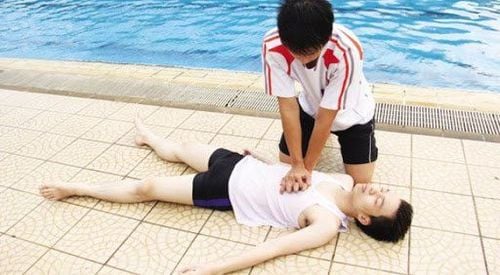
Hô hấp nhân tạo là phương pháp kết hợp ép ngực và thở cấp cứu để giúp cho máu giàu oxy lưu thông qua não và các cơ quan quan trọng khác cho đến khi trẻ hồi sinh
You notice a clear sign of life. Have an automated defibrillator ready to use You have been performing CPR for about 2 minutes and have someone else do it for you. You've done CPR for about 2 minutes, you're there alone with the baby, you need to call 911. Medical staff to receive the child. You are too tired to continue. That place becomes unsafe. Even if a child seems fine with help, the doctor will still need to check to make sure that the child's airway is completely clear and that the child is not traumatized internally.

Ngay cả khi trẻ có vẻ ổn khi có sự trợ giúp, bác sĩ vẫn cần kiểm tra để đảm bảo rằng đường thở của trẻ đã hoàn toàn thông thoáng và trẻ không bị chấn thương bên trong
Please dial HOTLINE for more information or register for an appointment HERE. Download MyVinmec app to make appointments faster and to manage your bookings easily.
Article referenced source: babycenter.com



